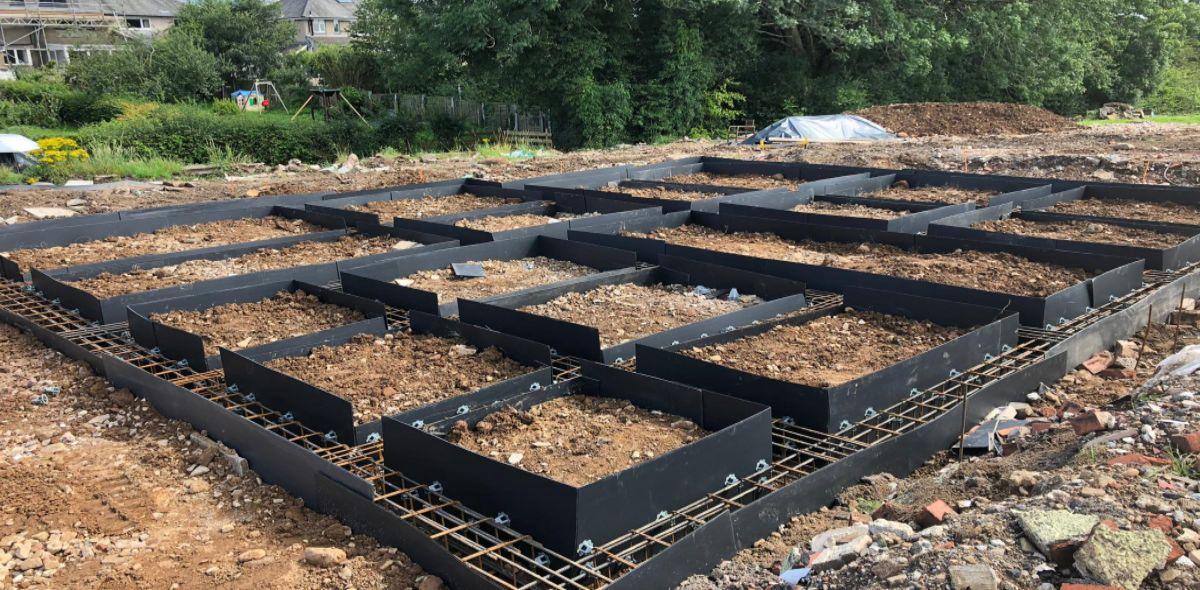Mini piling refers to the process of installing small diameter piles into the ground to support structures, such as buildings and bridges. The piles used in mini piling typically have a diameter of less than 100mm to 600mm and are installed up to a depth of 50m.
A mini piling company must install mini piles if the ground is unsuitable for traditional foundation methods, such as shallow strips or raft foundations. This may be due to weak or unstable soils, contaminated ground, or restricted access to the site.
Types of Mini Piling
The following are the types of mini piling.
Drop-Weight Mini Piling
Drop-weight mini piling is used for foundation construction when limited headroom is available. In this method, a heavy weight is dropped onto a pile, driving it into the ground. This process is repeated until the desired depth is reached.
The reason for using drop-weight mini piling is that it requires less headroom than other methods. This is why drop-weight mini-piling is preferred when building a foundation in small buildings or homes since these require less space.
Grundomat-Driven Mini Piling
Grundomat-driven mini-piling is a type in which a pneumatically powered hammer called a Grundomat is used to drive small piles into the ground and create a foundation for a building or structure. The Grundomat hammer is relatively quiet and creates minimal vibrations as it drives the piles into the ground.
Therefore, this mini-piling type becomes ideal for a home where a family lives and construction work take place. Using Grundomat-driven mini piling can help minimise noise and disturbance. It can also be useful in areas where wildlife is present, as it can help reduce disruption to the species living there.
Bored Case Mini Piling
Bored-case mini-piling involves drilling a hole into the ground using a boring machine and then inserting a steel casing into the hole before filling it with concrete. This technique is often preferred when there is a need for minimal vibration during construction.
Vibration can be a concern in certain situations, such as when working in a newly built building or wildlife zone, causing damage to nearby structures or disturbing the natural habitat of wildlife. Therefore, when building in such areas, using bored-case mini-piling is preferred.
Advantages and Applications of Mini Piling
The following are some of the advantages and applications of mini piling:
Advantages
- Versatility and Quick Installation: Mini piling is a versatile technique used in various soil conditions and building types. Plus, there is no need for excavation or concrete to set; this process is quick and easy.
- Minimal disruption: Mini piling causes minimal disruption to the surrounding area, particularly useful in areas with existing buildings or where environmental concerns are a priority.
- Cost-effective: Mini piling is a cost-effective technique, as it requires fewer materials and can be completed faster than traditional piling methods.
- Reduced noise and vibration: Some mini pilings, such as bored-case and Grundomat-driven mini piling, produce minimal noise and vibration, making them ideal for use in areas where noise or environmental impact is a concern.

Applications
- Residential buildings: Mini piling is commonly used to construct residential buildings, particularly in urban areas with limited space.
- Commercial buildings: Mini piling is also used to construct commercial buildings, such as offices, hotels, and retail spaces.
- Infrastructure projects: Mini piling creates foundations for infrastructure projects such as bridges, tunnels, and highways.
- Renovation projects: Mini piling can also be used in renovation projects to create additional support for existing structures or to correct foundation problems.
- Environmental projects: Mini piling is used in environmental projects, such as building retaining walls or creating underground water retention systems.
Factors Affecting Mini Piling Construction
The following are some of the factors that can affect the construction of mini piling:
Soil conditions
Soil conditions are among the most significant factors affecting mini piling Guildford construction. Different soil types have varying strengths, which can impact the stability of the foundation created by mini-piling. The composition and moisture content of the soil can also affect the ease of drilling and the quality of the pile installation.
Access and site constraints
Access to the site and site constraints can also affect mini-piling construction. The location of existing structures, trees, or other obstacles can impact the mini piles’ positioning and the construction equipment’s ability to access the site.
Load requirements
The load requirements of the structure to be built can also impact the construction of mini piling. The size, length, and spacing of the mini piles will vary depending on the load requirements of the structure.
Environmental factors
Environmental factors such as noise and vibration restrictions, endangered species, and waterways can also affect the construction of mini piling. In some cases, special equipment or techniques may be required to minimise the environmental impact of the construction process.
Contractor experience and equipment
The experience and equipment of the contractor performing the mini-piling work can also impact the quality and efficiency of the construction process. Contractors with more experience and specialised equipment are more likely to produce a higher-quality result within a shorter period.






